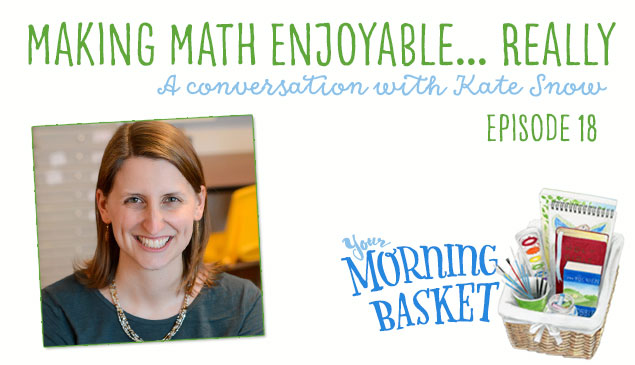 Pin
Pin 
We know that there must be more to math than just slogging through page after page of multiplication facts, but what? Last time I checked, wondering at geometrical patterns in God’s creation was not in the scope and sequence of my math curriculum, but it’s something I long for my kids to have opportunities to do. When can I fit in a math read-aloud or few rounds of one of the logic games collecting dust on the shelf? What about hands-on exploration with big math ideas like probability, estimation, or measurement? How can I make time for this kind of math in my homeschool?
We are joined on this episode of the podcast by Kate Snow of Kate’s Homeschool Math Help. Kate explains that, while skill work in math is certainly important, it really is okay sometimes to play with math without a lesson plan and Morning Time is the place to do just that. By weaving math explorations, stories, and games into Morning Time, we can put our kids in touch with big ideas and expose them to the beauty found in mathematics.
Pam: This is Your Morning Basket where we help you bring Truth, Goodness, and Beauty to your homeschool day. Hi everyone, and welcome to episode 18 of the Your Morning Basket podcast. I’m Pam Barnhill, your host, and I’m so happy you’re joining me here today. Well, today’s topic is a great one. It’s one that I know you guys are interested in because you have been telling me you’re interested in it, you’ve been asking me questions, and you’ve been wanting to know some resources that you could use to bring a little Beauty to mathematics in your homeschool, to make it more interesting for your kids. I think we all get bogged down in the day to day of math and learning the procedures of mathematics, learning the algorithms, memorizing those ever-so important math facts, and it kind of sucks the Beauty out of it for us. So I think you’re going to really enjoy today’s guest. Her name is Kate Snow, and she’s going to talk to us all about how we can bring a little more life and excitement and Beauty back to mathematics in our homeschool and how we can do that through doing math in Morning Time. So, sit back and enjoy the show. Kate Snow is a classroom teacher turned homeschool mom with a background in mathematics. She has a knack not only for teaching math but also for equipping others to tackle this sometimes intimidating subject. Through her blog, Kate’s Homeschool Math Help, and her books, Addition Facts That Stick, and Preschool Math at Home, she provides practical resources for homeschool families to approach math with both competence and confidence. Kate is joining us on the podcast to discuss how we can incorporate the Truth, Beauty, and Goodness found in mathematics into Morning Time. Kate, welcome to the program.
Kate: Thanks so much for having me, Pam, I’m so thrilled to be here.
Pam: I am so excited to have you on and I have to tell the funny story of how you ended up on the podcast.
Kate: Sure.
Pam: So, I sent out this email telling everyone, and honestly, when you’re writing subject lines for an email the main purpose of the subject line is to get people to open the email, and so I sent out this email that said, “You shouldn’t start your homeschool day with math” and Kate responded and she was very gracious in her response and she said, “I like the content that you’ve got going on here but I really disagree with your subject line.”
Kate: It did catch my attention, Pam, that’s for sure.
Pam: It did its job, and you offered to write a guest post on the blog which I thought was a fabulous idea but I knew immediately that instead of having you do that I wanted to have you on the podcast instead to talk about how we can start our day with math and it can be delightful.
Kate: I am so glad to be here because I know it’s a hard thing for a lot of moms and so many of us were taught math in such a boring, dry, textbook-y way that it can be hard to imagine that there’s any other way to do it.
Pam: I think for me, personally, I do really desire to give my kids that Beauty. It’s kind of like bugs; you go outside and you’re looking at bugs with your kids and you never want to go “ewww, yuck” you always want to go “That’s a great bug, that’s a lovely bug.” You don’t want to convey that “yuck!” kind of feeling about the bug to your children, and for me, that is very much the same way.
Kate: I applaud you for trying not to convey because it’s so important. There’s this amazing research how parents’ attitudes really affect kid’s attitude toward math, even for kids who go to school. I can only imagine that for homeschoolers that it matters even more.
Pam: You’re exactly right. Let’s work a little bit on not conveying that attitude and let you give us some tips on how to make it better. But first let’s start off with a little bit about you telling me a little bit about what Morning Time looks like in your home, because you do Morning Time, correct?
Kate: That’s right. We have actually started with Morning Time since my son was two-and-a-half. Henry is almost nine now and my daughter Elizabeth is almost six. And when I was a classroom teacher I had started my classroom day every day with Morning Meeting, and that had a different purpose- it was where I build community and to set a positive tone for the day. And so, I had this little two-and-a-half year old and I just felt like our days had no structure, and I thought, ‘Well, you know, I’m just going to do Morning Meeting with him.” So when he was two-and-a-half we just started sitting down on the couch and reading a pile of books together every morning and so that’s evolved a lot obviously from a two-and-a-half year old to a nine year old and a five-and-a-half year old, and as I’ve learned more from you and the other Schole sisters I feel like that’s really enriched my Morning Meeting Time, to be a lot more purpose, and help me to really think about what’s Truth, and Beauty, and Goodness, it is a positive start to the day but I’m also trying to get those most important things in during my Morning Time. So these days we usually start with some sort of singing, usually something from church that we’re working on (to learn and memorize) but also to have fun just singing together, then we do some memory work (usually a little bit of poetry, a little bit of Scripture) and then we have a rotating book basket. I do days of the week; I like lists, I like to know exactly what I’m supposed to do next, so we have different books for different days of the week. For example, right now we’re reading Greek myths, one of those great Holling C Holling books, Pagoo, he wrote Paddle to the Sea this wonderful geography/science all in one, we’ve been reading Fairy Tales, and then we also do some math. Right now, our main math in our Morning Basket is East Academy, which is my son’s math curriculum. They have this great graphic novel textbooks and my daughter loves to read along with even though she doesn’t understand any of the math, so we do a lot of that in our Morning Meeting as well.
Pam: OK, great. Let’s segway into some of this mathematics talk. What is it that you, Kate Snow, love about math? Help me see.
Kate: So, what I love about math is I see it as the intersection of what people have created and the natural world, because math is something that is completely invented. People have made it up and have been working on it as a system for thousands of years, but at the same time they’ve created this system but it describes the natural world so beautifully. Astronomers can use math to do incredible things. Right now, there was an article last week that said that astronomers think that there might be a ninth planet beyond Pluto, and the only way they know about it is by math, we can’t see it, but they can tell from the equations that there could be something out there. And, so I just love how math can make creation more known to us, help us to understand it better, and yet it’s also this very human system that people have had to work at and strive at and put a lot of blood, sweat, and tears into it as they’ve developed it over the centuries.
Pam: Oh, that’s really great. You do make it sound exciting.
Kate: Good!
Pam: Well, it may surprise some people to hear the words “math” and “Morning Time” in the same sentence. So, why do you think that the study of math has a place in the practice of Morning Time?
Kate: Well, I think the main reason is that math is a beautiful subject, but the way that we often treat it, we treat it as skill work and so our kids aren’t able to see that beauty. And so, for me, it really helps to pull that out to make sure that we’re putting that into our schedule in other places. And it’s like language arts, in language arts there’s so many skills; we need to teach punctuation and spelling, and so we teach those skills but we also make sure that we’re reading wonderful books out loud to our kids, that we’re enjoying silly poetry, that we have conversations and they see how all those skills come together, and in math it’s kind of like we’re just teaching them the punctuation and spelling, we’re just teaching the skills and not helping them see the big picture of what math is all about. And so doing math in Morning Time I feel like it lets us share that big picture with our kids, helps them see the subject as a whole lot bigger than long division and multiplying fractions.
Pam: OK. Nobody has ever put that like that to me before, and that is so true. I am completely blown away by this analogy, because in language arts, there are four or five different pieces that you’ve got to keep juggling and keep up in the air and some of them are very utilitarian, and other ones are very beautiful, but with math we only do the utilitarian part.
Kate: Exactly.
Pam: Why do you think that is?
Kate: I think it’s because, for just a long time, math hasn’t been taught well. It has been considered the province of professors and people who know a lot of stuff that we don’t know, the rest of us. But it’s really not that complicated, and so I think it just has been beyond what people can achieve but that’s not true. Anyone can pick up a beautiful book or read some math poetry or enjoy a game with their kids, and bring that Beauty into their daily lives and bring it down to earth.
Pam: So, when you say beauty in math that is what you’re talking about, a well-written, living math book, or some kind of math poem. I know, is it Theoni Pappas has some math poetry …
Kate: And some wonderful books, actually.
Pam: So, is that the kind of thing you’re talking about when you’re talking about Truth, Beauty, and Goodness in mathematics? Can you give me some examples?
Kate: Sure. And it’s also that, it’s seeing the bigger picture of math, it’s also about seeing math outside of numbers. Number patterns and sequences can be very beautiful, but I think a lot of the time we need to see math through a geometry, through shapes, through other kinds of patterns, and through patterns that play out in the real world, to really give us those moments of transcendence with math that we have with say, writing. It is a matter of playing with math and taking it out of the realm of just practicing your addition facts or learning to multiply.
Pam: I’m going to ask you to get really specific. How can I see a pattern in math outside of numbers? How can me, as somebody who’s sitting here going, ‘Where am I supposed to see this?’
Kate: Well, one place I recommend people start, there’s this wonderful series of youtube videos called ‘Doodling in Math Class’
Pam: Vi Hart.
Kate: Yes, and this woman takes these ideas in math and makes them visual. For example, the Fibonacci sequence is a famous sequence in math, and what it is, is you just start with adding together; you start with the number 1, add them together and make 2, and you take the last two the 1 and the 2 to make a 3, the 2 and 3 to make a 5. So it’s not very exciting when you’re just looking at those numbers in a row. What she does is she makes it visual and then she shows how those patterns show up in nature over and over and over again. Everything from pineapples to pine cones to sunflowers and all of a sudden this pattern comes alive.
Pam: OK, so by watching a video like that and learning where those patterns occur in nature, then that would be something I could point out to my kids?
Kate: Right. But then in terms of doing things that are more hands-on, one thing that I think is really fun to explore as kids is tessellations. Are you familiar, have you heard of that word before?
Pam: OK, it’s like repeating shapes that fit together perfectly or something?
Kate: It is, and so bathroom tiles is generally a tessellation; if you have all squares the squares fit together and they can completely cover a surface, and sometimes we use hexagons in the bathroom floor- you can put those hexagons together to cover a surface.
Pam: Like the beehive.
Kate: Exactly. But not all shapes tessellate. And so it’s really fun to grab out a bin of pattern blocks and try different shapes and see, “Can I take the skinny diamond and put them together to completely cover the surface?’ ‘What if I use a combination of a skinny diamond and a square?’ and you make beautiful patterns along the way but also explore some really interesting things with the angles and the sides of the shapes.
Pam: I’m going to stop you right there. So I build these pattern blocks across the table and we start putting together and we figure out these will tessellate and these won’t and if we combine these two, these will tessellate but then what do I say to make it a math lesson? What do I say to help them see that there’s math in there?
Kate: That, I think, is the hardest part about this honestly, because as homeschool moms we want to have a lesson plan, we want to feel like we’ve accomplished something. And there are some ideas that we just have to play with. It’s kind of like observing a beautiful owl, and observing its feathers, and observing its beak. I know we talk about the function of those things, but at some point we just want our kids to bask in the beauty of it, and the enjoyment of it, and so in that, you could say, “This is a tessellation, it covers things,” and define tessellation. It’s not very exciting though, but what the kids have accomplished is that they’ve played with a lot of angles, they’ve seen that little squares with their 90 degree angles fit together, but some of the other ones that are real pointy with really small angles they can’t cover. So, I can’t tell you there’s something specific and concrete that you’ve accomplished with that lesson but the kids have explored angles in a way that will make high school geometry a lot easier, that they’ve had some hands-on experience with it, and built some skills along the way.
Pam: So, I guess this might be some of Charlotte Mason’s big ideas and Cindy Rollins would say you don’t want to beat the big idea into the child you just want to present the idea and let them come in contact with it? Is that what we’re going for?
Kate: Yes, I do think so! To understand that not all things have to be functional, it’s kind of the whole point I’d say of math and Morning Time. It doesn’t have to have a purpose, that it can be tied to a very specific lesson.
Pam: OK. Well, let’s talk about some other rules of thumb for how to approach math during Morning Time. You’ve made a really big point – is that there doesn’t have to be this concrete lesson or point that we’re trying to drive home, we can just play and explore. Are there any other rules of thumb for approaching math in Morning Time?
Kate: Related to that is the idea that in Morning Time it’s a really good opportunity to build kids’ thinking muscles, I call them. And so there are a lot of games and logic puzzles that aren’t directly tied to a particular math objective, say, for elementary school. But anytime that kids are thinking and strategizing and using logic, they’re building those thinking muscles in a way that helps them to think more deeply about everything and builds their logic for all subjects, and helps them learn to be better problem solvers.
Pam: Do you want to give me a couple of ideas?
Kate: Sure. So, for example, just in our newspaper we have a little feature call KenKen, it’s like Sudoku, you know those little logic puzzles where you fill in all the digits from 1-9 in either direction and my kids just love sitting at the table with me with a pencil and we work on it together, trying to figure out, ‘Well, could there be a 1 here, could there be a 2 here?’ and trying to use process of elimination to figure it out. It doesn’t teach them anything about addition or subtraction but that process of elimination logic that they’re doing just builds their thinking muscles for when they are solving problems during our math time.
Pam: OK. Any more?
Kate: There’s also some great solitaire-style logic games that are on the market. We play them as a family. So there’s one called Rush Hour where you set up cars and you try to get the car through the maze. There’s one called Animal Logic that’s the same way. And again, they’re not direct math skills but they’re building those math logical foundations.
Pam: OK, and those things would be perfect for Morning Time because my kids wouldn’t see them as school at all.
Kate: Exactly. They look like a toy; they’ve got little wooden animals or little plastic cars, and so it feels completely different.
Pam: Well, we often talk about mom as a learning alongside her kids during Morning Time, and it seems like this would be especially applicable when it comes to math, because so many of us feel ill-equipped to teach mathematics. Do you have any suggestions how a mom could approach math during Morning Time and be a co-learner with her kids? You’ve given us some great ideas but any more for the math-phobic?
Kate: For the math-phobic, I think, really accepting that you’re going to learn along with your kids is the most important thing. Living Books and good math read alouds are wonderful ways for a mom to be able to do that because it does allow you to experience the wonder at the same time. And so one book that I really love is called The History of Counting and this is a book for first through third graders or above. And it just goes through how people have developed counting over the years, and how the different cultures have contributed to how we use numbers today. So it’s a great time with history but also allows mom to learn along with her kids.
Pam: So sharing those living math books with your kids and learning alongside them as you’re reading.
Kate: Yes, I think that’s a wonderful way to do it. Another book, you mentioned the Pappas books, by Theoni Pappas, and the Adventures of Penrose is a book that she wrote that my kids and I have gone through in our Morning Time and just loved, and this book is great because it just offers a couple of pages of introducing a topic. It’s all about her cat and how her cat gets into her math stuff and explores it, and then there are some really specific and hands-on activities to do with each section. So, for example, you create your own fractal in one section, or you explore the math of soap bubbles, and so there are things that you can do that are hands on but also help you to just dabble in a few of these topics that might seem really intimidating.
Pam: And there’s a cat!
Kate: And there’s a cat. If the cat can do it, we can do it.
Pam: That’s true.
Kate: Very approachable.
Pam: Either that, or if you can’t do it, “Gosh, this cat can do it, what’s wrong with me?”
Kate: The thing about doing this in Morning Time too is that you have to keep in mind is you’re running a one room schoolhouse when you do this, and so your kids at different ages are going to different things out of it. My kindergartener and my third grader, they’ve got different things out of these activities when we went through them. But they’re fun for everybody and even the kindergartener can enjoy some of it even if she doesn’t quite get the full idea.
Pam: Right, and what age range would you recommend Penrose for?
Kate: I’d recommend anywhere from first to about fifth grade. There’s really a lot of good content in there.
Pam: We actually have that book and we have not read it yet.
Kate: It’s a good one.
Pam: I’ll have to pull it off the shelf. What else do you like as far as living books go for mathematics? Give us a couple more.
Kate: Sure. I really like David Schwartz’s books. He’s the guy who wrote, How Much Is a Million, and he has a few more books like that of counting to a million, and they’re wonderful books because they really get you thinking about what a million means. If you counted to a million how long would it take, or if you had a million of something how much space would it take up? So, they are really fun just for developing number sense for littler ones. And then my favorite book for older elementary kids is called The Number Devil by Hans Magnus Enzensberger and this book (it’s a very playful devil it’s not a scary devil) but each chapter goes through these interesting number patterns and again, gives activities to do together and some ideas to play with, and they get into some really interesting ideas in there, like where the irrational numbers come from and what square roots are, kind of is a little tour of our number system in a very playful way.
Pam: OK, great.
Now, you’ve given me some wonderful living books here, and we’ve talked about tessellation and the fibonacci sequence. What are some other math topics that moms might look into to explore with their kids in Morning Time?
Kate: Well, one thing that’s really fun to do is to play with estimation. And that’s something that kids of lots of different ages can do, and it can be really valuable for kids of different ages. So, for example, just grabbing a bowl of dried beans, it can be as simple as that, and then have each child try to estimate how many in the bowl. It’s a start. But then what you can do is, say there’s about 200 beans in that bowl, you pull out a group of 10 and look at that group of 10 and then use that 10 and think, ‘Well, how many groups of 10 are in there? Could we make our estimate better?’ Or you can count out half of it and then see if the kids can refine their estimates after they know how much half of it is. Estimating is always a hands-on activity that kids can engage at a whole bunch of different levels of sophistication.
Pam: OK, because they’re not going to really, when they are looking at that bowl of beans for the first time, and honestly, I think we should use m&ms here…
Kate: That sounds so much better!
Pam: … so when they’re looking at this bowl of beans (or m&ms) for the first time to them, your average five or six year old, this could be a million? Or it could a thousand? Or it could be fifty? And they aren’t going to really have any idea. So what you’re doing is breaking down and showing them, modeling the strategies that they could use to get a better grasp on making a good estimate. OK, what else besides estimation?
Kate: I think also measurement is a great thing to work on at Morning Meeting. It can be so fun. Kids really need to develop hands-on sense of those and one way to do that is to teach them a measurement benchmark, so for example, a foot. You can show them how to hold their hands about a food apart from each other or give them a ruler even, and then you can take that and send them off and have them all try to find something that’s about a foot long, and you can do that with an inch or with a meter or something that weighs a pound, and it’s a great way for them to get to know those and to find them, again, outside of the math book, to find them in the real world.
Pam: So this could be like a scavenger hunt?
Kate: Exactly. You could do one a day, you could do a few in a row. Whatever works best for your family.
Pam: That sounds like a lot of fun. I think my kids would really like that. OK, so if I’m looking to stock my Morning Basket, my little homeschool area even, with manipulatives or other materials so that I could, at any morning, pull out and have a really great math exploration, what are some things you would recommend me having on hand?
Kate: I mentioned pattern blocks before and those are really great, there’s a lot of different things you can do with them. You can make patterns, you can tessellate, you can make symmetrical designs. They’re really handy to have on hand. Another thing I really like for younger kids are Unifix Cubes and Ten Frame Trains. Unifex Cubes are those colored blocks that snap together, and they’re great for teaching addition and subtraction, but they’re also great for making patterns, and when you combine them with Ten Frame Trains, which are little trains that have 2×5 grid on them for the box to fit into, now you can really do a lot of fun games with things like roll a die and add that many cubes to your train, and race to see who can fill up a couple of trains first, talking about 10’s and 20’s and multiples of 10 with those. And another thing I really like for stocking your math basket is just coins and play money. This is more of a skills thing, but just having a cup every morning where you have some coins in and have your kids count them. It’s not about Truth and Beauty quite so much but it’s a fun skill thing to incorporate into Morning Meeting to figure out how much the coins are worth.
Pam: And it would be something that would get their brain firing.
Kate: Exactly, right. Just a little warm up.
Pam: OK, anything else?
Kate: There are a lot of board games that are great to have, that you might already have around your house as well. We really like Qwirkle and Yahtzee at our house for games that kids of different ages can play together. And again, that can get those math muscles going.
Pam: I was about to ask, I’m sitting playing Yahtzee with my kids, do I need to talk about probability, but then I realized I wouldn’t even know where to begin. So what does somebody like me do in a situation like that?
Kate: With Yahtzee a lot of the fun is just rolling the dice and working on keeping score and adding up all those numbers. That’s a great place to start. For starting to explore probability, I’d suggest starting with some real hands-on activities that are very concrete. For example, putting two blue socks and a red sock in a basket or a brown paper bag or something, take one out and record what you get. Do that 10 times. Take it out, put it back in. And see, did we really get more of the red socks than blue socks? Is that how it worked out this time? Or flipping a coin 20 times and writing down whether you got heads or tails and then seeing what happened in the end. It’s really good for kids to have hands-on experience with probability and to see how we can predict that with flipping a coin we’ll get heads about half the time, tails about half the time, but it’s not always going to be half. Sometimes you might get 12 heads or you might get 15 heads even sometimes, so for them to experience that probability is only telling about what we think will happen but it’s not always going to happen in every case.
Pam: OK because I was really on the edge of my seat here wondering what was going to happen. I know so little about probability, “We’re supposed to get that about half the time, are we?”
Kate: If you do that experiment 20 times or so it’s amazing how many times you’ll get strange results.
Pam: So really, the answer is mysterious which is what I’ve always thought about probability.
Kate: It is. We can predict that the probability is only telling us the average, about what will happen.
Pam: If I as a mom want to learn more about the beauty in mathematics and how I can bring math into my Morning Time and things of that nature, do you have anywhere you can point me to just become better educated about these kinds of things myself?
Kate: My favorite book for this is called, Let’s Play Math. It’s by Denise Gaskins, and she is a homeschool mom herself and has a blog, and her book is this treasure trove of ideas. It has lots of game ideas, wonderful resource list of living books, it has tons of information. It would keep you going for several years of Morning Time, so that’s one I’d highly recommend.
Pam: So that would be a great resource for us.
Kate: For how to do it in Morning Time. And then there’s also a website called Bedtime Math.
Pam: Oh yeah, I’m a big fan.
Kate: Have you seen that? It’s great, they have a lot of really fun problems and they’re Facebook page has so many beautiful expressions of math. I like to follow their Facebook page and just show them the beautiful things that come up in it to my kids just to wonder at it and enjoy it together.
Pam: Great. I was not aware of their Facebook page but I have been recommending their website and their book and their app to people for a couple of years, that’s largely how we get our mathematics in Morning Time is through their materials.
Kate: Very exciting.
Pam: It is. Well, tell us a little bit about what we can find at your blog.
Kate: At my blog I really try to equip and empower parents to teach math with confidence. I have articles. I have curriculum reviews for people who are trying to pick a curriculum. And then I also have articles about the nitty gritty of how to teach math, especially how to take concepts apart and teach them all to our kids, but then I also try to include some fun stuff, some of these hands-on activities that we could do at Morning Time or other times in the day to make math come alive. So for example, my kids and I, we made a scale model of the planets a couple of weeks ago so I have an article about that, or at Halloween we try to find the volume, the kids each had a pumpkin from the pumpkin patch and were arguing about whose was bigger, and so we put up about all the different ways they explored to see whose was bigger, including finding the volume of them. So those are some of the things you can find at my site. And I also on my blog have a collection of games that are appropriate for kids who are working at multiple levels in math. These are more skill oriented games. But if you’re looking for games that a kid who is learning addition and learning multiplication can play at the same time, I’ve created some games that kids can play to do that together.
Pam: That is an awesome resource, because I have kids like that.
Kate: Most of us do.
Pam: Wow that will be really great for homeschool moms. OK, that blog is Kates Homeschool Math Help and we will include a link to that in the Show Notes. Well, Kate, I just want to thank you so much for coming on and joining me today and helping me get over some of my fears on bringing math into my Morning Time.
Kate: Well, thank you so much for having me, Pam. It’s been such a pleasure.
Pam: And there you have it. Now for today’s Basket Bonus, Kate has put together a lovely packet of math games for us that you can play with all of your kids together. So kids of multiple ages together and you can get that Basket Bonus and any links to resources Kate and I spoke about today by going to EDSnapshots.com/YMB18. While you’re there check out the link that we have there to Kate’s brand new book, Preschool Math at Home. This was just very recently published by Well Trained Mind Publishing and it’s all about a great way to introduce your preschooler to numbers and mathematics in your home, so be sure to check out the link to that as well. Believe or not guys, this is the final episode of Your Morning Basket for season 2. We are about to go on a brief hiatus for the rest of the summer. We’ll be back in August with some more great Morning Time interviews for you. In the meantime, we have a new endeavor coming out. Be sure to check out the Homeschool Solution Show. Now, the Homeschool Solution Show is an audio blog that we will be doing, the people here at EDSnapshots.com will be producing for you, and it will start May 20 and it will be a weekly show, it will come out every Friday. So, if you’re going to be missing Your Morning Basket over the summer, and we certainly hope you are, watch iTunes on May 20 for the Homeschool Solution Show. We think you’re going to like that one a lot. You guys have a lovely summer and we’ll be back again in August, and until then, keep seeking Truth, Goodness, and Beauty in your homeschool day.
Links and Resources from Today’s Show
- Kate’s Homeschool Math Help
- Addition Facts That Stick by Kate Snow
- Preschool Math at Home by Kate Snow
- Beast Academy
- Doodling in Math Class on YouTube
- Bedtime Math
- The Adventures of Penrose the Mathematical Cat by Theoni Pappas
- The History of Counting by Denise Schmandt-Besserat
- How Much Is a Million? by David Schwartz
- The Number Devil by Hans Magnus Enzensberger
- Let’s Play Math by Denise Gaskins
- Rush Hour
- AnimaLogic
- Yahtzee
- Qwirkle
- Pattern Blocks
- Unifix Cubes
- Ten Frame Trains
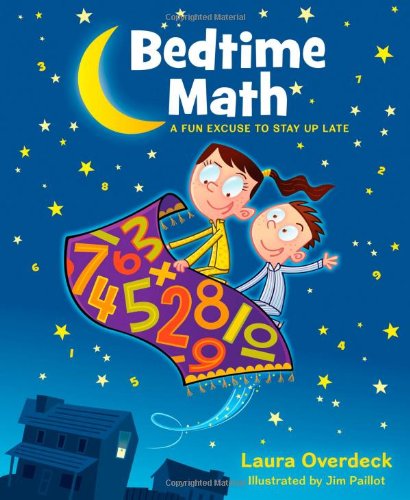


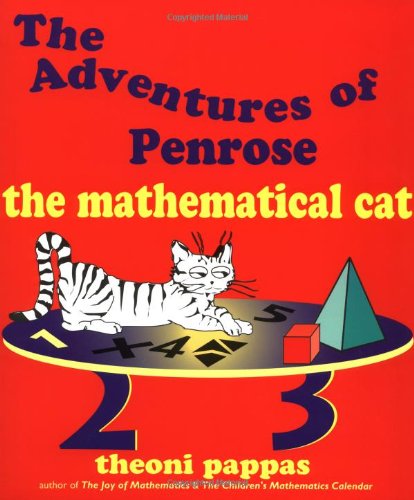
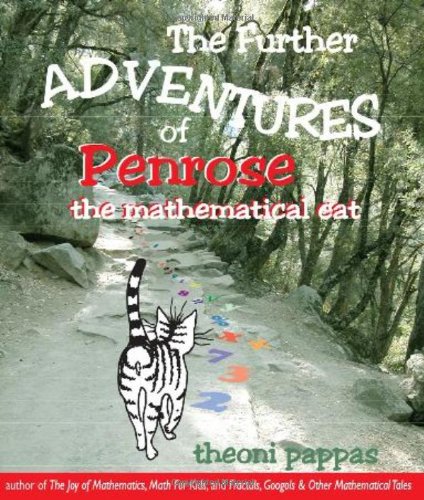
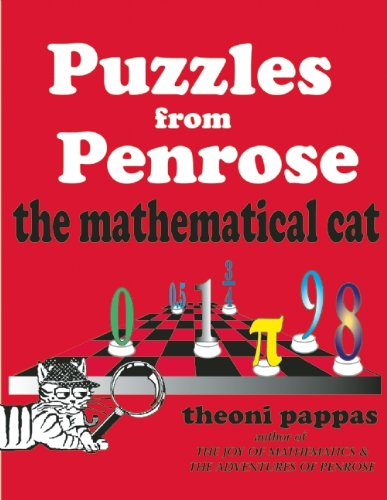
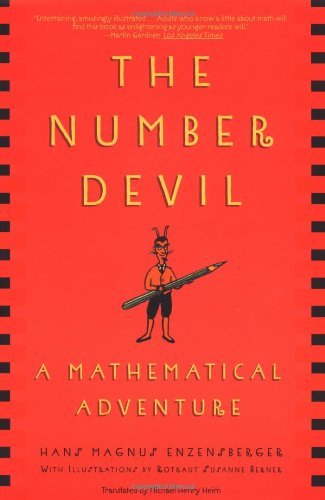


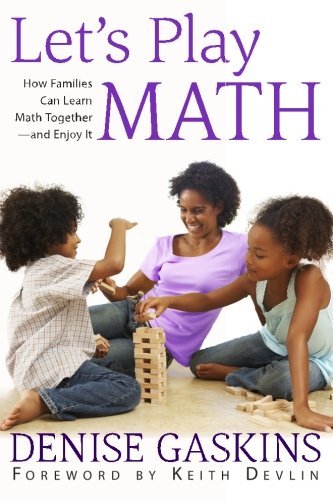

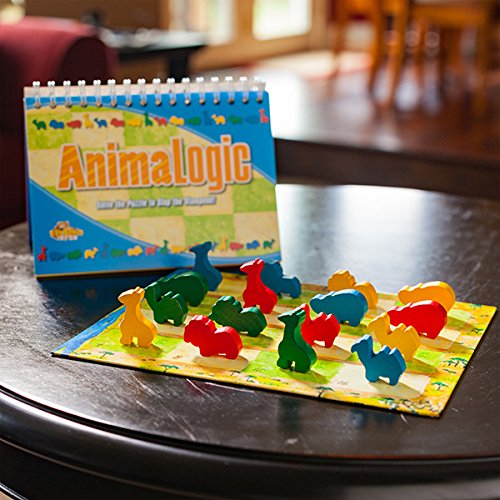
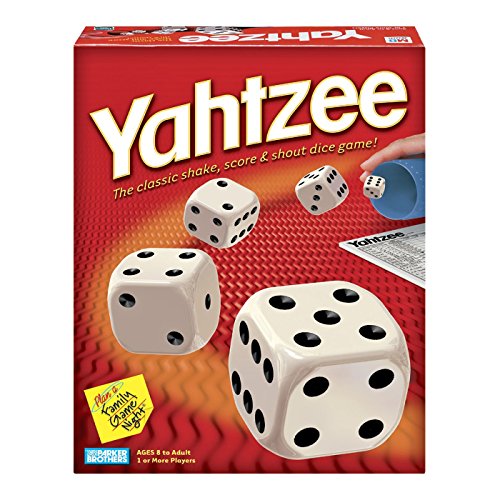
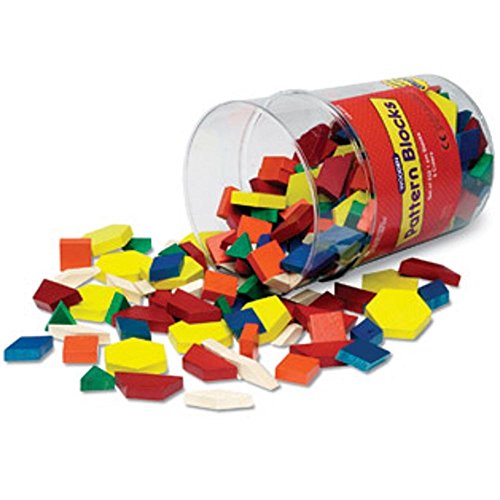
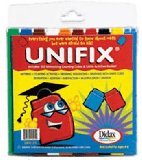

Key Ideas about Math in Morning Time
- Math is a man-made system that is able to beautifully describe the world God has made. Math can help us understand our world and put us in touch with the discoveries of great thinkers of history and today.
- In this interview, Kate makes a thought-provoking analogy between language arts and math. In teaching language arts, we are careful to not only instruct children in phonics and grammar, but also to expose them to beautiful poetry and great stories. As we teach math, it is important not to stop at teaching the skills; we should also seize opportunities to explore the beautiful ideas of math with our children.
- During Morning Time, we can set aside the math lesson plans and objectives and focus on putting our kids in touch with some big ideas. Through play and exploration, children will begin to connect with those ideas and make them their own
Find What you Want to Hear
- 4:23 Kate’s morning time
- 6:28 math as a man-made system that describes the natural world
- 7:30 why math has a place in Morning Time
- 7:52 Kate’s analogy between math and language arts
- 9:32 beauty in math
- 10:40 the Fibonacci sequence
- 11:38 tessellations
- 12:28 playing with ideas; leaving the lesson plan behind
- 14:37 building “thinking muscles” through games and logic puzzles
- 16:33 math living books
- 20:18 estimation
- 21:49 measurement
- 22:40 Kate’s favorite manipulatives
- 24:17 board games
- 24:50 probability
- 26:09 resources for mom
- 27:35 an overview of Kate’s blog
 Pin
PinLeave a Rating or Review
Doing so helps me get the word out about the podcast. iTunes bases their search results on positive ratings, so it really is a blessing — and it’s easy!
- Click on this link to go to the podcast main page.
- Click on Listen on Apple Podcasts under the podcast name.
- Once your iTunes has launched and you are on the podcast page, click on Ratings and Review under the podcast name. There you can leave either or both!
